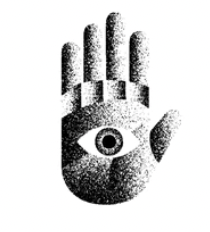I still remember the first time that I saw a Rubik's cube. I was about eight years old and visiting my grandmother's home in California. She had very nice belongings: expensive paintings, a little brass bird and egg, elegant wooden furniture - all stuff that I wasn't allowed to get my grubby little mitts on. The colorful, enigmatic cube was the closest thing she had to a toy in the whole room, so I fiddled with it impatiently as she and my father chatted away. I was always an industrious kid, and my grandfather on the other side of the family made wooden puzzles that were a challenge, but with some time and effort, I could complete them. The Rubik's cube, I found, was an entirely different beast.
I spent the greater part of an hour moving the the sides of the cube hither and thither, with nary a minuscule chance of completing it. I felt like the monkeys they give keyboards to; randomly hitting keys, and knowing that the complete works of Shakespeare weren't going to show up on my page any time soon. I couldn't even solve one side. I dismissed the gadget (I pointedly decided the creation was NOT a toy) and only fumbled with it every so often when we again visited. Pointless, futile efforts!
That was, until I found myself out of the country, with a lot of time on my hands. I was almost twenty years old, and lived away from home. I saw a Rubik's cube at a grocery store that had a small toy aisle (yes, I frequent the toy aisle at grocery stores), and thought to myself, "golly - there are masochists in this country as well."
However, having flipping great wodges of time on my hands, I took up the cause to solve the cube. And so I did. It took me hours the first time, and I ended up with a deeper understanding of how objects rotate in 3D space than I ever thought possible.
But it was possible.
And I got better at it.
And when a friend saw me fiddling with my multicolored little pal (by now, I called him 'Blockhead' - hurtful, I know...but he didn't seem to mind), they would ask me to show them how to do it, and I would expound to them the mystic secrets of the Rubik's cube.
When I first saw Ben Cardall's The Roobik Booklet, I was instantly intrigued. I knew from those years of frustration that the Rubik's cube is already magic to most people, and I couldn't wait to see how he would employ its time-honored reputation for impossibility to his advantage. Let me just quickly say that he does. Seven times.
Ben puts forth effects that span the gamut of improbable to inexplicable in his work, the whole while relying on the fact that most people are hopeless when it comes to thinking about the inner workings of the device.
He gives great tips for both those with a working knowledge of the cube as well as for first-time "cubers" (coined!).
He does so with great love of the craft and a delightful sense of humor. It is easy to tell from his writing that he is a passionate performer and the text has also been admirably polished. If I were to level a criticism at the effort, it is that the chair test is somewhat difficult to follow, but I figured it out in the end.
I'm not unrealistic, I recognize that after reading this book, some may think that Ben dips too often in the same well, but each effect is solid, and has great potential. While much of the methodology is similar, each portion of the book offers a gem that makes it unique and completely worthwhile.
I will suggest that the reader not be turned off by some of the tools inherent to traditional magic that are required in order to realize these effects. I think they are thoroughly worth it, and your persona and character ought to serve as more than enough misdirection on their own to ensure that you can do what is needed.
What I am particularly pleased about is that most readers have a mutual friend named Craig, who offers something that would allow a heck of a set to be built. Consider it! That little item, then a bigger one where a participant mixes it behind your back (and you do too) and then they match! Throw in a chair test with a clever reveal at the end, and your reputation grows!
I have to say that I am excited to dust off my cube and test this material in my own close-up routines. And for anyone versed in solving the cube, there is a lot of potential in using that ability to cause amazement after an effect. Imagine helping your audience member--who has never completed the puzzle in their life--finish the cube and stare down in wonder at what they have just done.
Given the price, and number of routines, if you are at all interested in the Rubik's Cube and the undeniable level of authenticity it lends any effect, you would be well served to check out Ben's work.
Best,
Atlas
